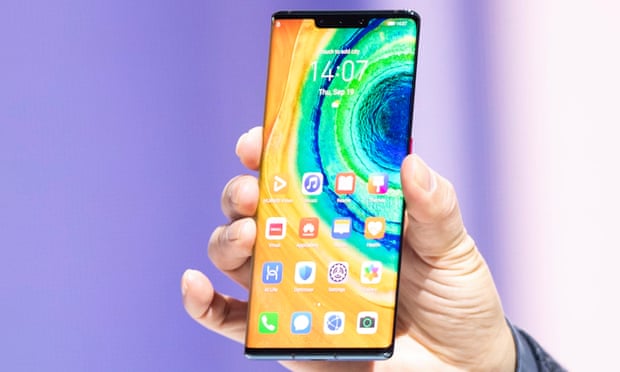Chinese smartphone maker, Huawei has launched its flagship smartphones, the Huawei Mate 30 and Mate 30 Pro.
Like most flagship devices, the phones come with top features, including four rear cameras, a Kirin 990 chipset which allows the phones better power efficiency, ramped up CPU, AI and graphical capabilities. In addition, the Mate Pro also has a 5G model.
The Mate 30 Pro packs a 4,500mAh battery capacity, while the Mate 30 is slightly smaller at 4,300mAh. Both come with a 40W Huawei SuperCharge technology, fast charging abilities and the wireless reverse charging – allowing you to charge other devices.
But with these interesting features, the new Mate devices are missing something just as vital too – Google apps/services.


Although, the Mate 30 series is operating on an open-source version of Google’s Android operating system, it is without the Google Play app store or services like Gmail, YouTube and Maps pre-installed on it. This is unlike previous models of the Huawei Android smartphones and is due to the ongoing Chinese row with the US government.
In May, the US government blacklisted Huawei over security concerns, leading to a trade break between Google and Huawei. Following this, Google announced that Huawei will not be a recipient of its services, including Google Play Store, Play Services as well Android OS updates and security patches for its new devices (Mate 30, Mate 30 pro).
However, Huawei is still able to rely on the Android OS (which is open sourced), but that will mean developing alternatives to Google services like its own app store, called the Huawei App Gallery.
“Because of the US ban this phone cannot install the GMS [Google Mobile Services] core that has forced us the use the HMS [Huawei Mobile Services] core”
Richard Yu, CEO of the Huawei Consumer Business Group.
But these are not sufficient. Huawei’s own app store only has about 45,000 apps which is meagre when compared to the over 2 million found on the Google Playstore.
Still, this may not present a problem for Huawei in its Chinese market as most of Google’s services are blocked in the country. And because of that, Huawei has long been selling Android phones without Google apps in China. But moving to Europe and Africa, it might pose a huge problem as the chances are bleak that it can make up for the absence of those Google apps that many smartphone users have come to rely on.
In an interview with BBC, a spokesman for the firm, said that “there would also be a way to ‘side-load’ Google’s apps onto the handsets and that phone store staff would advise customers how to do that, although they might not run as smoothly as normal.”
But this may not meet the expectations of customers who don’t have the patience to side-load and tolerate possible issues.
And this is a huge blow to Huawei’s ambition of becoming the smartphone manufacturer by volume as it will crumble its sales. Particularly if no one outside of China is willing to buy an Android phone without the Google apps.






